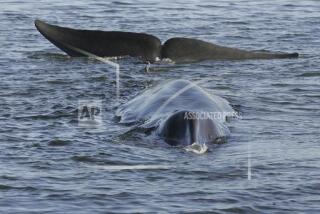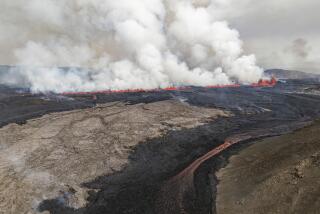A Gushing Natural Resource : Iceland Is Hotbed of Geothermal Power
- Share via
REYKJAVIK, Iceland — Let the rest of the world cope with the environmental perils caused by coal, oil and nuclear power. Icelanders are warmed by pollution-free geysers and lava fields.
As European farmers destroyed crops contaminated by fallout from the Soviet nuclear accident, Iceland’s geothermal market gardeners went on filling shops with risk-free tomatoes and other vegetables grown defiantly on the edge of the Arctic circle.
Radiation monitoring recorded only negligible extra levels on Iceland’s east coast after the April 26 Chernobyl mishap. Winds from the North Pole virtually kept the nuclear cloud away--just as acid rain from Europe’s coal-fired industries never finds its way to this North Atlantic outpost halfway between New York and Moscow.
“As terrorism and radioactivity scare American tourists away from Europe, Iceland is the only country to report no drop in bookings,” said Sveinn Saemundsson, a spokesman for Icelandair, the country’s largest airline.
Unusual Natural Resource
Cultivating food and flowers in greenhouses heated by water from the depths of the Earth is only one way Iceland uses its unusual natural resource.
Geothermal power is created when rainwater seeps down to the geologically young island’s hot underground, where it is turned to steam. Iceland has a greater concentration of hot springs than any other country.
Vikings settling on Iceland in the 9th Century are thought to have used hot springs for cooking and washing. The word “geyser” comes from the Icelandic geysir .
Today, geothermal energy means year-round Mediterranean temperatures in homes and boiling water at the turn of a tap for more than 80% of the island’s 240,000 inhabitants. Many of them brave blizzards to swim outdoors in the steaming local pools.
Less Costly Than Oil
A nationwide buildup in the use of geothermal power and heat began in an effort to beat the oil crises of the 1970s. Today, home heating on the central hot-spring system costs only a fraction of oil or electrical heating.
The hot springs provide one-third of Iceland’s energy needs. The rest is supplied by hydro power and oil, which is used mainly for cars and the fishing fleet.
“Iceland was importing 160,000 tons of oil a year in 1973,” said Rutur Haldorsson, a spokesman for the national energy authority. “Today the figure is down to 24,000 tons. Without geothermal heating we would have to import 450,000 tons of oil a year (now).”
Geothermal water and steam are also used in chemical manufacture and fish meal production. Biotechnologists are at work on the latest idea--developing microorganisms found only in Iceland’s hot springs for high-temperature industrial jobs.
Boon to Aquaculture
Geysers fuel Iceland’s drive in aquaculture, which besides breeding Atlantic salmon is being extended to experiments with tropical seafood, crabs and giant freshwater prawns.
Iceland’s geothermal consultancy is a developed export industry, with more than 30 countries on its roll of customers.
But the best aspect is that Mother Nature’s energy, unlike that generated by man, leaves the environment untouched.
Neither radiation, nor soot, nor acid rain comes with the columns of steam rising from geostations such as the eight-megawatt Svartsengi plant on southwest Iceland’s Reykjanes peninsula.
But there are perils. Iceland lives on the lid of the Earth’s bubbling caldron, and sometimes things bubble over.
In 1973, the 5,000 inhabitants of the Westman Islands got out in the nick of time when their friendly neighborhood volcanic mountain erupted one night. But when they returned there was hot water for all until the end of this century from beneath the new-formed lava fields.
More to Read
Sign up for Essential California
The most important California stories and recommendations in your inbox every morning.
You may occasionally receive promotional content from the Los Angeles Times.













